a guide on classical French cuts
and what I did to win the national stage of the WorldSkills competition 🥇👩🏼🍳🔪
French cuisine is great, but not my favourite. When I crave food, it’s usually not French, whether it’s a hot summer day (perfect time for some leaves with laab) or a freezing cold winter evening (time for a bubbling bowl of kimchi jiggae!). However, it is hard to ignore the impact that French cuisine has had on the art of cookery. More specifically, the French cooks were the ones to really get things in order, defining methods and precise definitions for stocks, mother sauces, cutting techniques and the organisation of a kitchen. During my years studying culinary arts, this French influence has had to be the most prominent one and becoming familiar with it made my life as a chef much easier. Easier to the point, where my confidence with the knife allowed me to make the key progress in various competitions.
French cuts are a lot about knowledge of the definitions and rules, but just as much about becoming confident with knives (not in the naughty way) and physical self-discipline. What I mean by self-discipline is the ability to work methodically, manage time carefully, follow the ‘clean as you go’ rule and adhere to safe working practices.
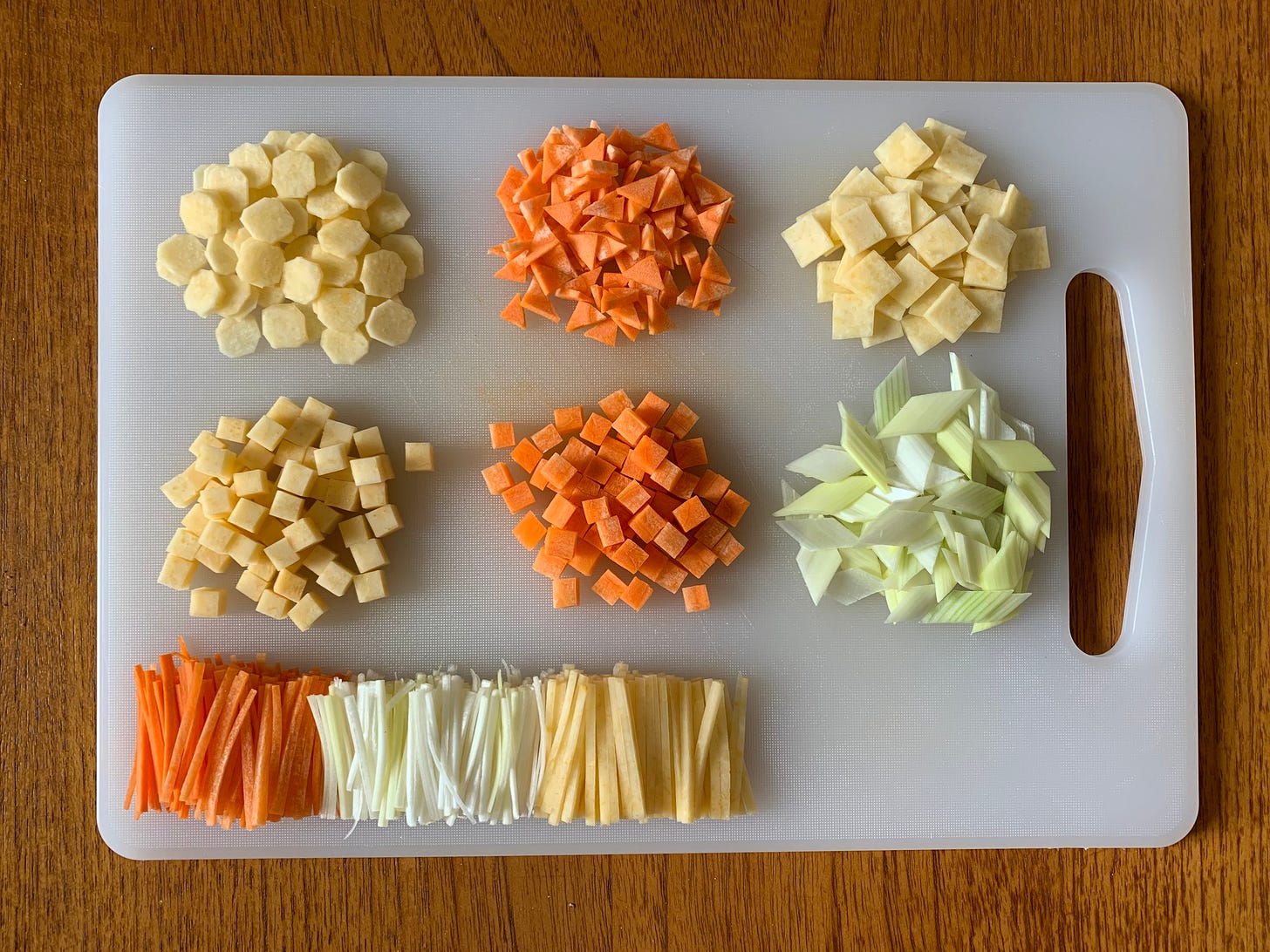
A bit of a context:
In 2021, I participated in a WorldSkills competition in the category of Culinary Arts. It consisted of four stages, including several practical pressure tests, recipe design tasks and live showcases. In the ultimate stage of the national finals, only eight contestants from the entire UK remained, including me as the only one from Scotland.
The preparations for the competition took eight months and involved an extensive study of French traditional techniques and recipes mostly from The Escoffier Cookbook and The Guide to the Fine Art of Cookery, along with the development of my food preparation skills. This eventually led to me winning the gold medal in the national finals. Before we get to cutting advice, here’s a quick description of this last stage, which covered 3 busy days:
Day One
I was given 5 tasks that were based on French egg dishes and in 4 hours I was required to prepare 2 portions of each dish and present them to the judges.
Oeufs pochés bénédictine (Eggs benedict)
Omelette à la concasse de tomates (A classic French omelette with tomatoes prepared into classical concasse)
Ooeufs brouillés au saumon fumé, crème et ciboulette
Tartelette aux œufs mollets
Day Two
Day two was divided into morning and afternoon sessions. The morning was dedicated to general mise un place, and the afternoon was devoted to actual cooking.
AM (3 hours):
Vegetables prep:
Production of paysanne cuts (diamonds, circles, squares, and triangles) - 100g each vegetable: leek, celery, carrot, turnip, cabbage, and French beans
Tomatoes concasse
Brunoise of an onion
Grapes
Fish prep:
Fishmongery and presentation of classical cuts of fish (lemon sole and a trout).
Cooking a fish stock to be then produced into fish velouté.
PM (3 hours):
Mystery task - Soupe minestrone utilising the paysanne cuts as per Practical Cookery book
Mystery task - Trout as a main ingredient
We were given a wide range of fresh and dry ingredients and were asked to create a main dish in our style. I went for a pan-fried trout served with mussels and cockles in a beurre blanc sauce and lemon samphire.
Sole Veronique as per Practical Cookery book
Sauté potatoes and buttered French beans as per Escoffier Cookbook
Day Three
Day three was also divided into morning and afternoon sessions. The morning was dedicated to mise un place and work on garnishes for the pm session, and the afternoon was devoted to actual cooking.
AM (3 hours):
Breaking down whole chickens for sauté as per the Practical Cookery book (13 pieces)
Garnishes for the pm session such as brown stock, demi-glace, herbs and tomato concasse
PM (3 hours):
Poulet Sauté Chasseur - Hunter's Chicken
Fricassée de poulet - Creamy chicken
Mystery potato dish: Pommes de terre duchesse (Duchess potatoes)
I might write another post covering this in more detail if there’s interest. For now, let’s go back to the French cuts!
Time to sharpen the knife and start from the basics 🔪
The following includes specification of the key French cuts along with some advice on how to practice them.
The cuts on a carrot:
Julienne - long thin strips:
4cmx2mm
Brunoise - small cubes:
2mmx2mm
Macedoine - large cubes:
5mmx5mm
Jardiniere - short batons:
18mmx3mm
Paysanne:
thin slices (2mm thick)
keep the natural shape of the vegetable and don’t square it off
Simple table set-up (for practice):
brown chopping board and non-slip rubber mat
small tray with jay cloth for a chef’s knife, peeler, ruler, and bread scraper
large presentation tray
3 bowls for:
whole carrots
cuts that can be reused into for example soups
peels and ends
Table set-up for a competition (professional):
brown chopping board and non-slip rubber mat
small tray with a chef’s knife, peeler, ruler, and bread scraper
large presentation tray
3 bowls for:
cuts that can be reused into for example a soup or a mirepoix
peels and ends
paper waste
A container for cleaning carrots with a colander for draining
4 small trays:
unwashed carrots
washed carrots
cut carrots (so you don’t keep everything on a chopping board)
Paper towel, jay cloth, sanitiser, a small box with plasters, disposable gloves
Small bins and an extra bin bag
General key points:
Sharp knife (advice if you compete - even if your knife is sharp enough I suggest sharpening it for a few more seconds in front of the judges so they know that your knife is more than ready for the job)
Be organised (prepare an action plan and a list of equipment beforehand)
Clean as you go (the station and the chopping board need to be clean all the time, and don’t keep any waste on the chopping board)
Follow hygiene and health and safety rules such as washing your hands before starting any task, not leaving your knife alone on the chopping board, and securing it with a mat so it doesn’t move around
Be focused and enjoy the process at the same time
Discard waste, but don’t chuck away the parts that could still be consumed! The judges might ask you, why you have so many vegetable scraps, be ready to answer that you plan to use them for something, such as making potage.
Detail on French cuts
🥕 Julienne (long)
Step by step:
Peel a carrot and cut the ends off
Cut the vegetable into a 4cm length (I recommend using a ruler for measuring if you’re still learning)
Square the piece off
Cut 2mm slices - and arrange them into piles (max 3/4 slices each).
Cut the slices into strips
🥕 Brunoise
Step by step:
Peel a carrot and cut the ends off
Cut the vegetable into a 4cm length
Square the piece off
Cut 2mm slices arrange them into piles (max 3/4 slices each)
Cut the slices into strips
Cut strips into 2mm squares
🥕 Macedoine
Step by step:
Peel a carrot and cut the ends off
Cut the vegetable into a convenient length
Square off the edges
Cut the carrot into 5mm slices
Cut the slices into 5mm stripes
Cut the stripes into 5mm squares
🥕 Jardiniere (short)
Step by step:
Peel a carrot and cut the ends off
Cut the vegetable into a convenient length
Square of the edges
Cut the carrot into 18mm length
Cut 3mm slices
Cut 3mm slices into batons
🥕 Paysanne (circle)
There are two ways:
a) A country style that is more informal and rougher. The vegetable is thinly cut according to its natural shape, without squaring it off. It’s a great way to prevent wastage and that’s the technique I use here.
b) More formal cut that’s often requested for competition assignments. The method requires cutting the vegetable into 1cm x 1mm diamonds, squares, circles, and triangles. Please, let me know if you’d like me to write a post about the second technique in the future.
Step by step:
Peel a carrot and cut the ends off
Cut the vegetable into a convenient length
Thinly cut the carrot into circles (about 2 mm)
Here’s the link with more information regarding the WorldSkills UK - Culinary Arts - if you ever get a chance to participate, I cannot recommend it enough.
If you have any questions, hit me up on my Instagram.
Thanks for reading and happy cutting! 🔪





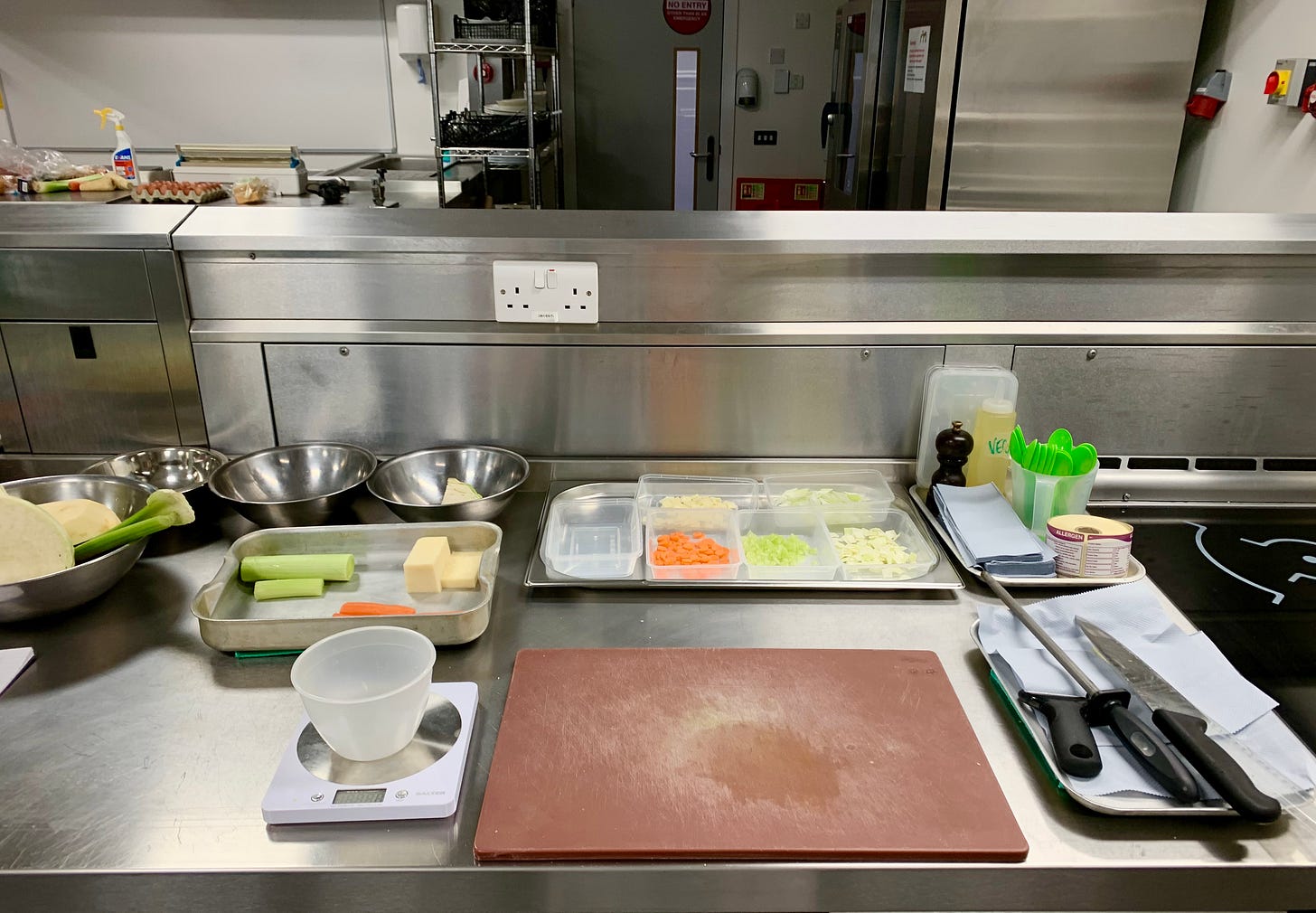
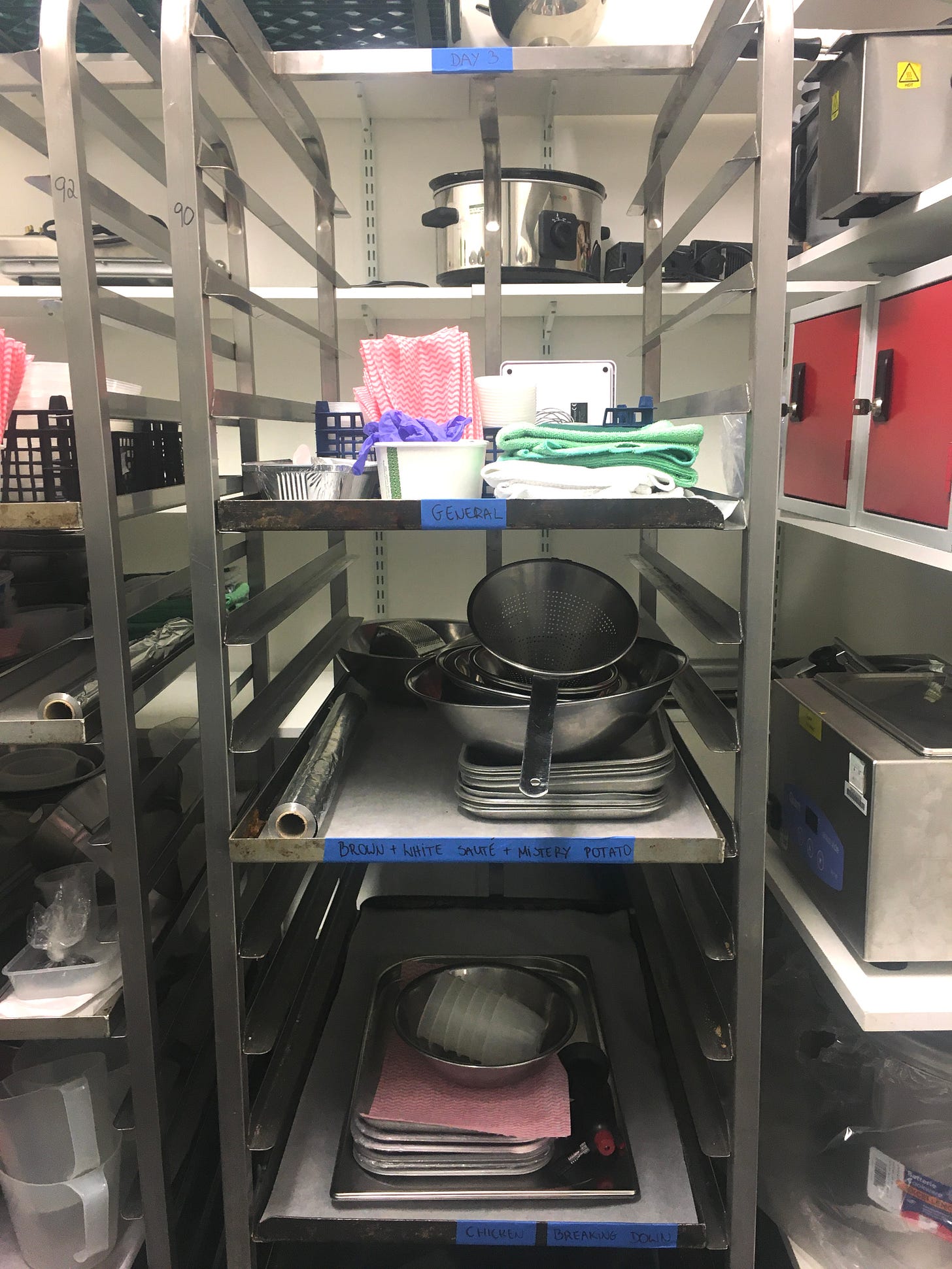
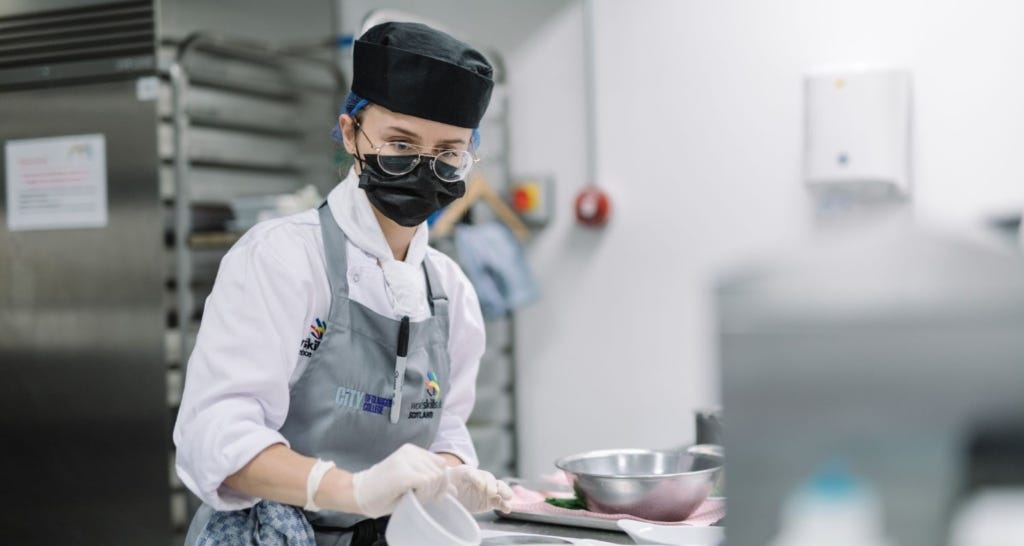
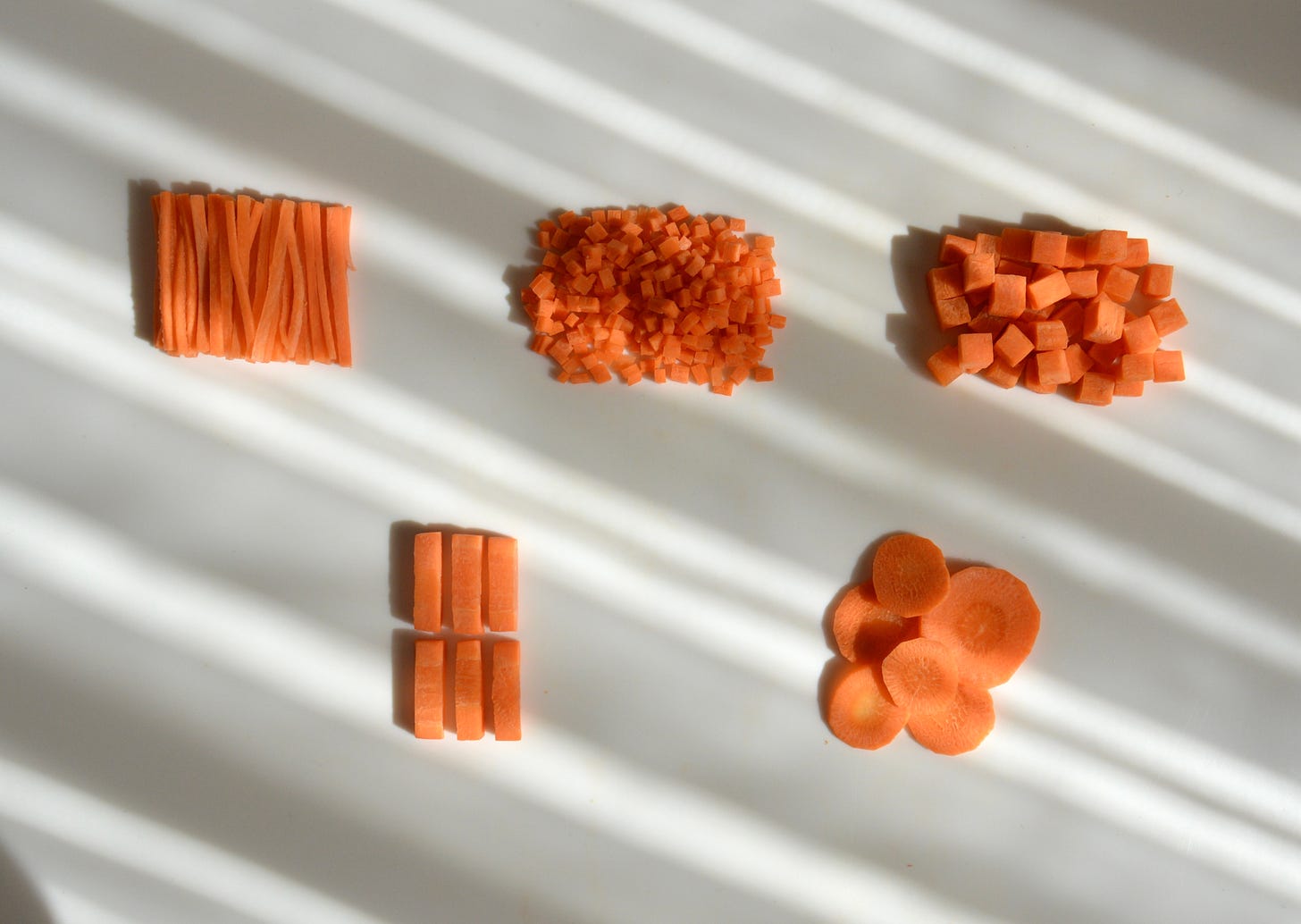
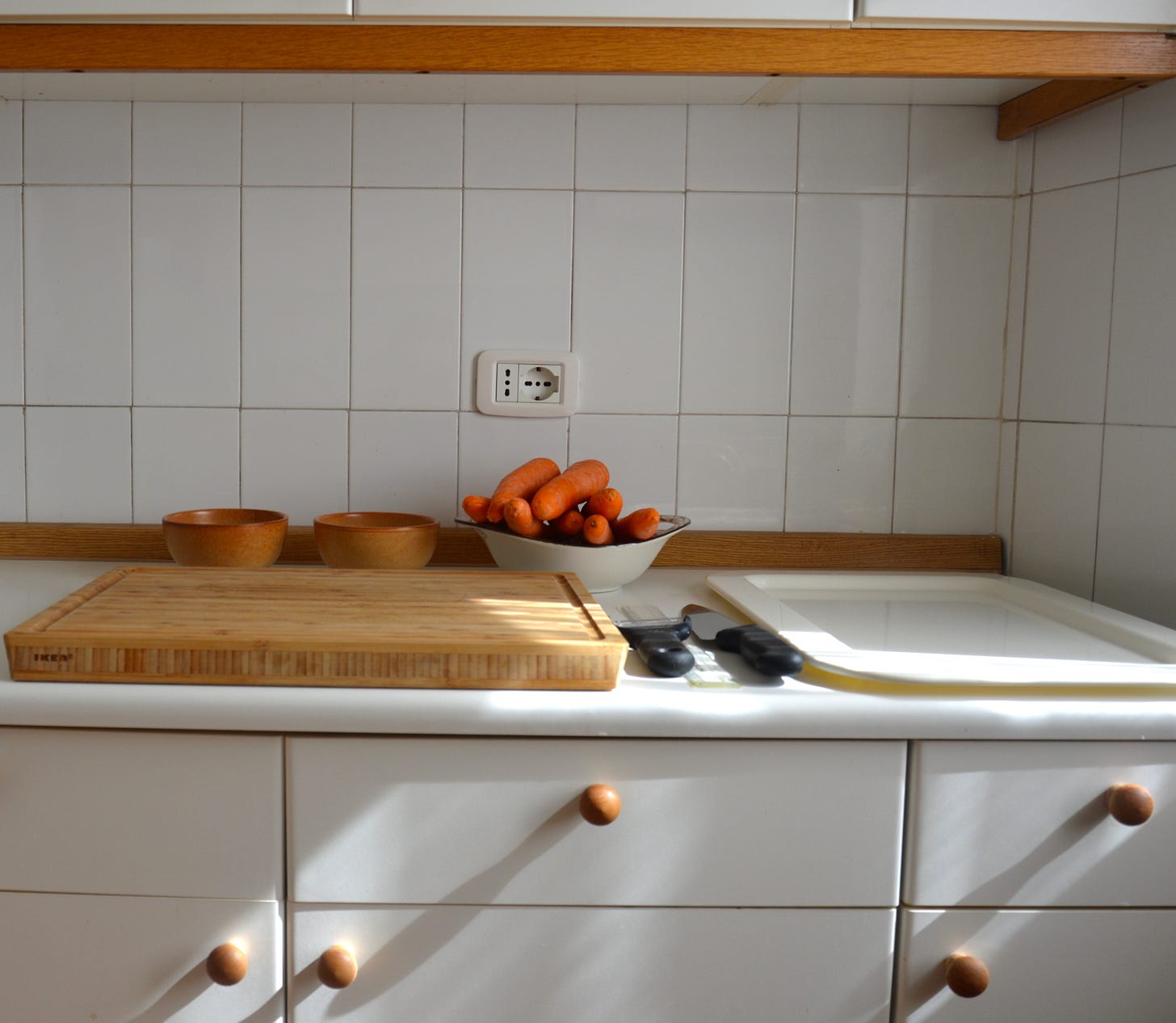
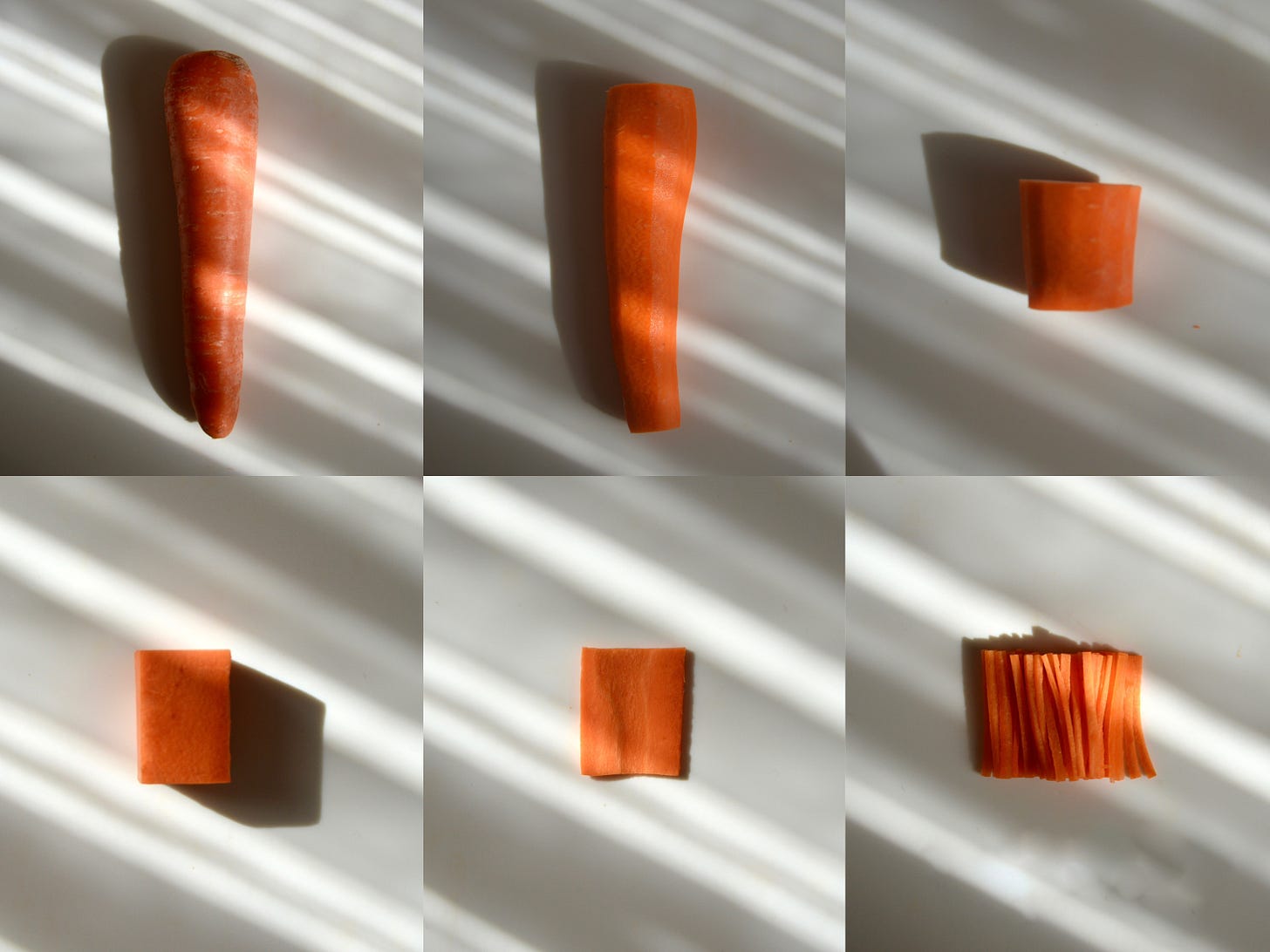

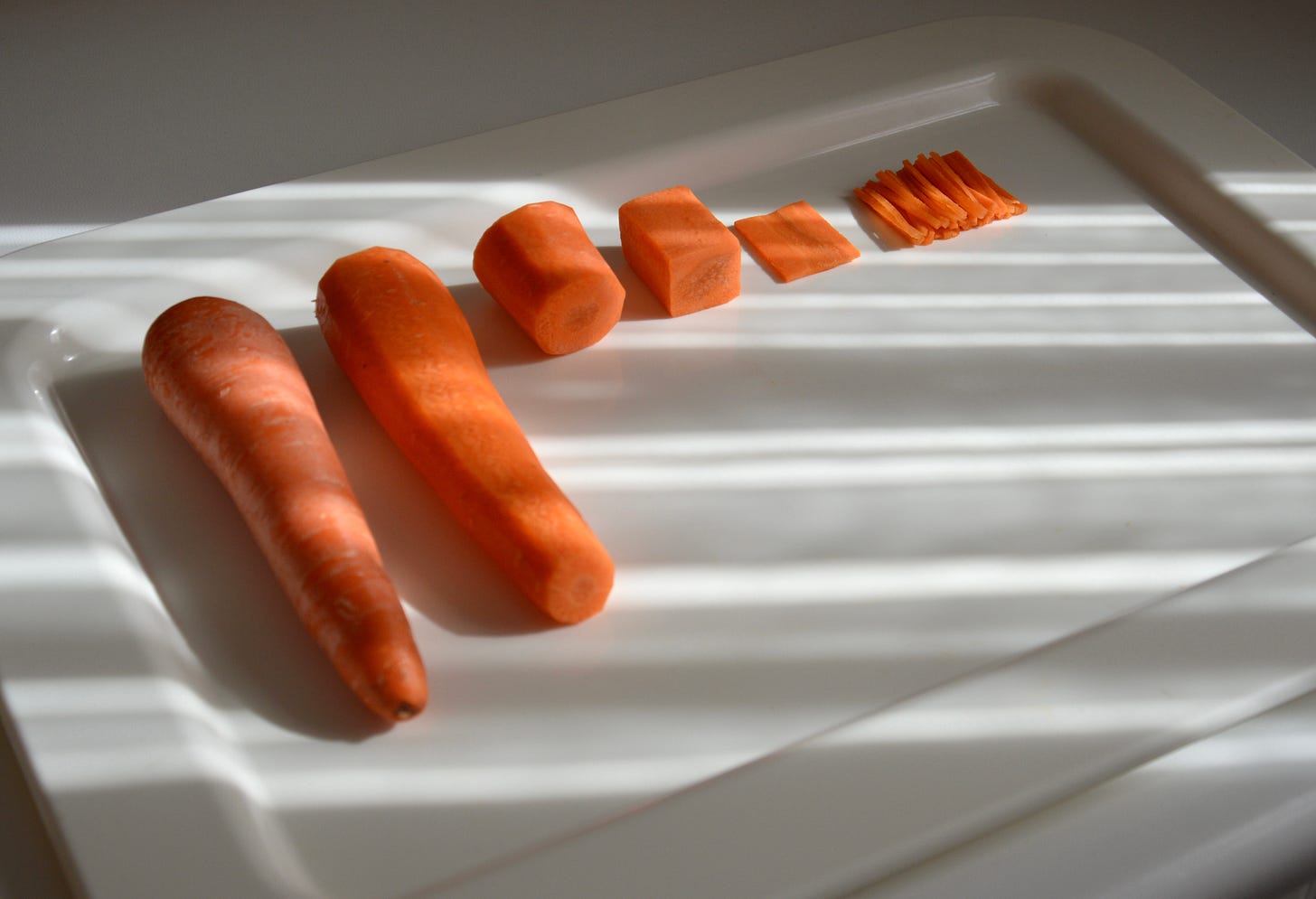
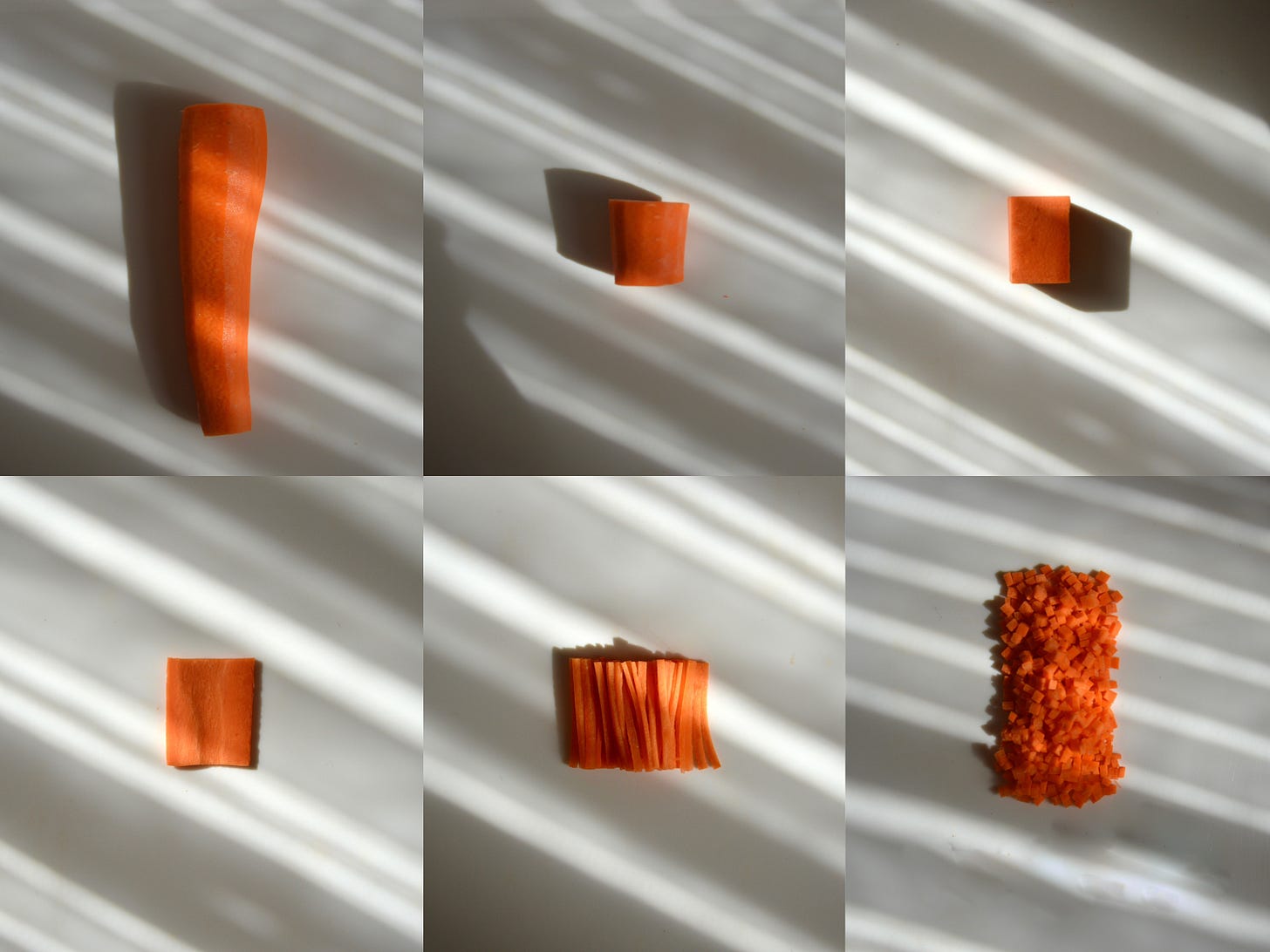
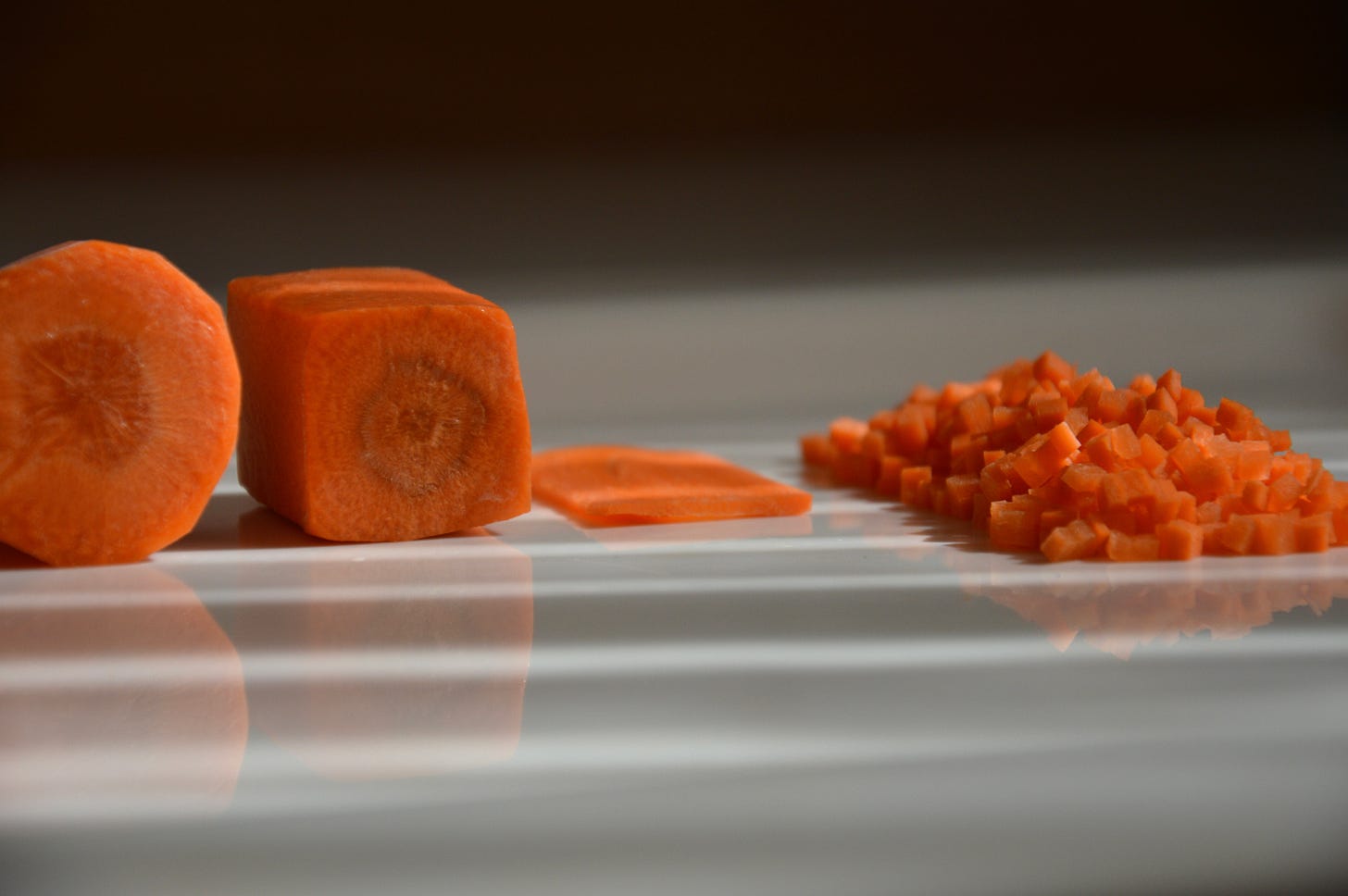
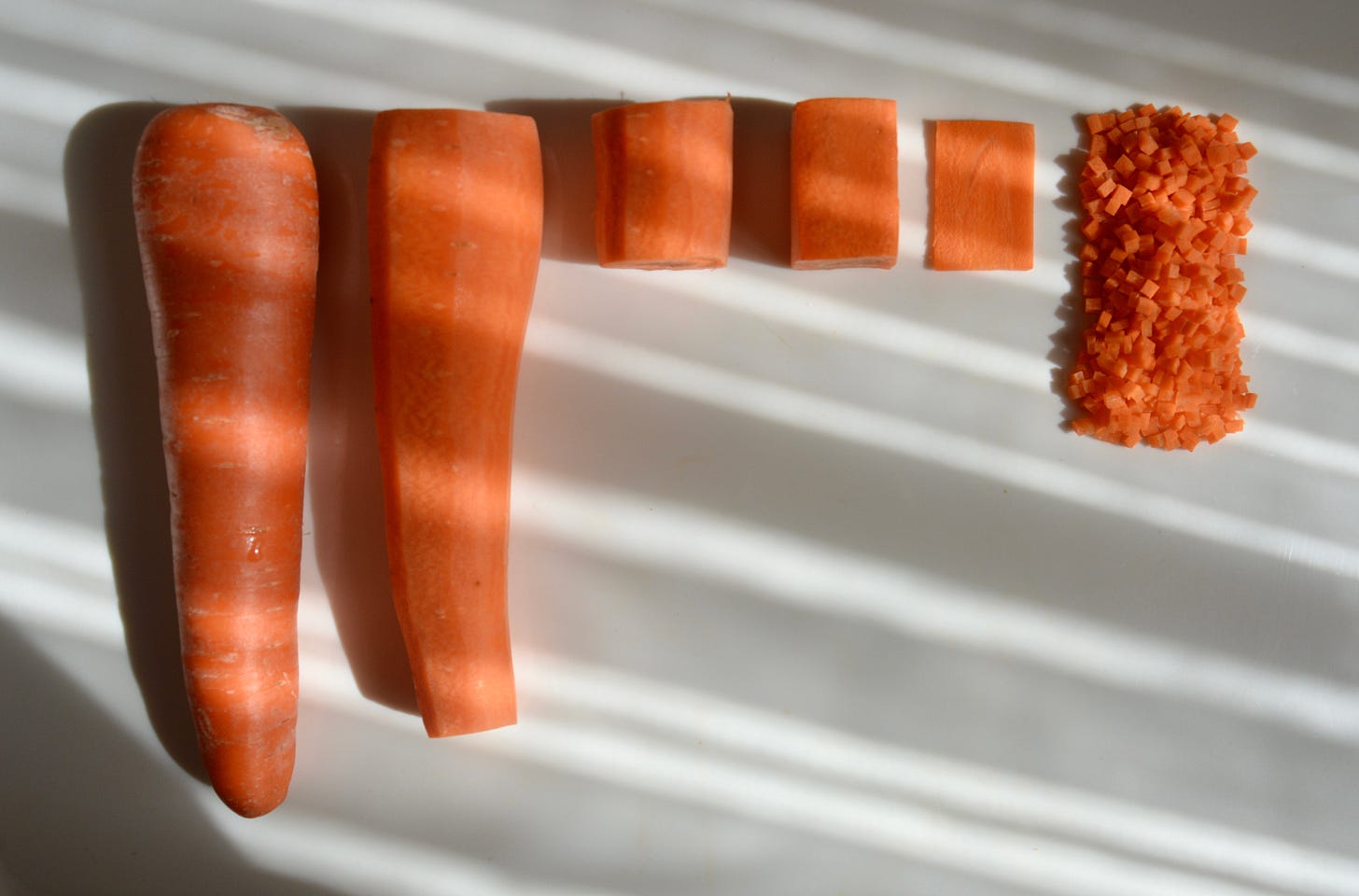
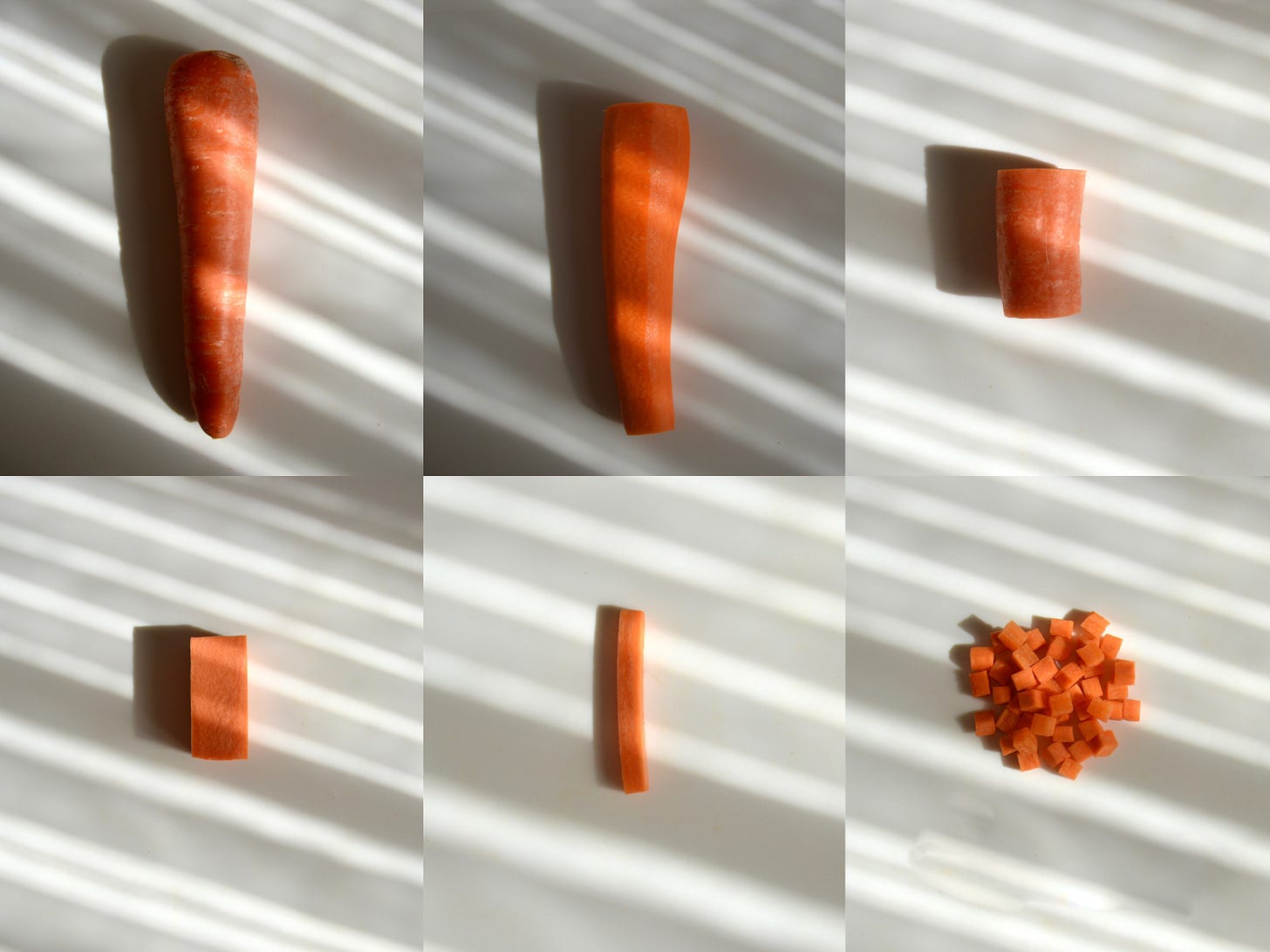
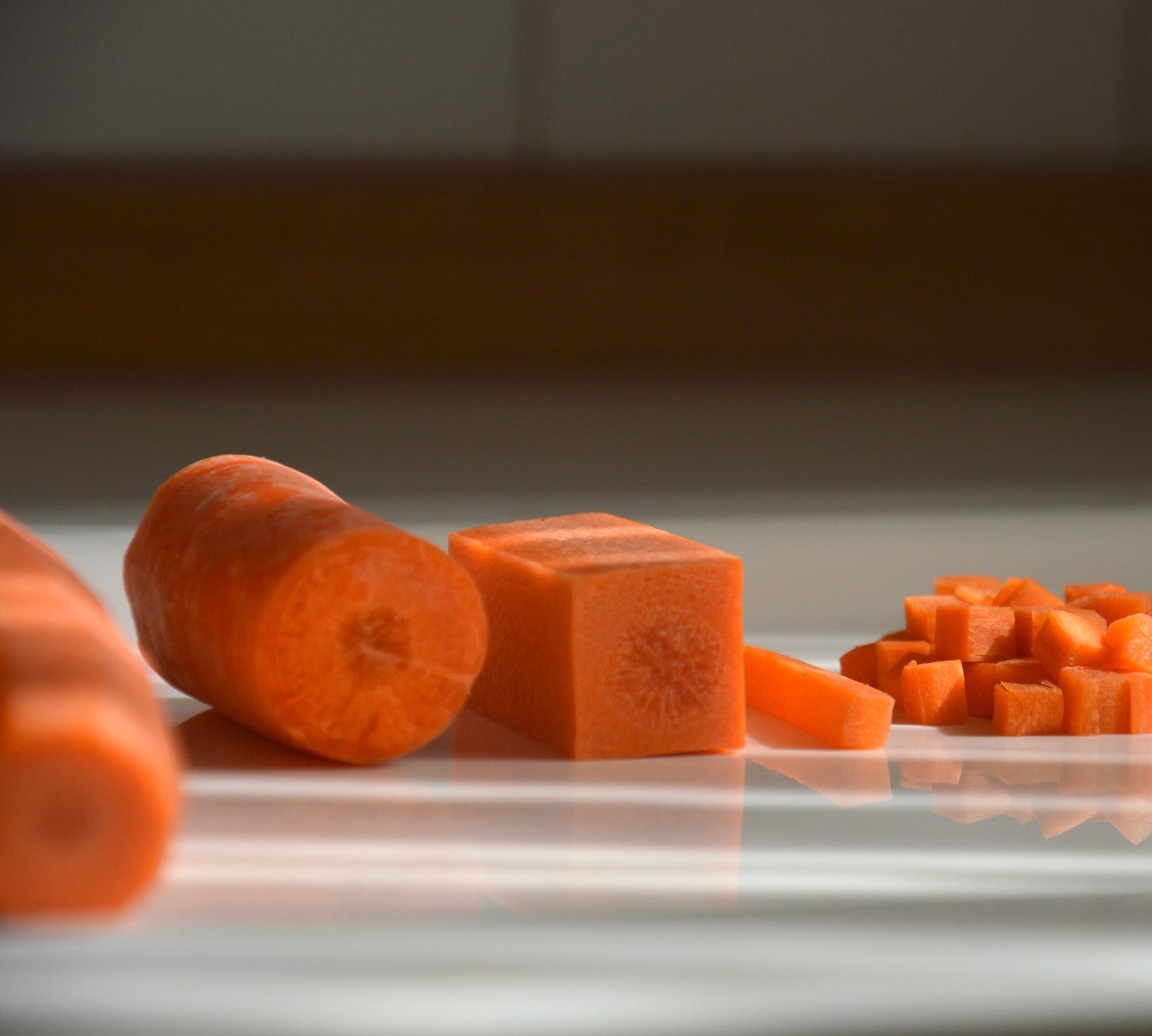
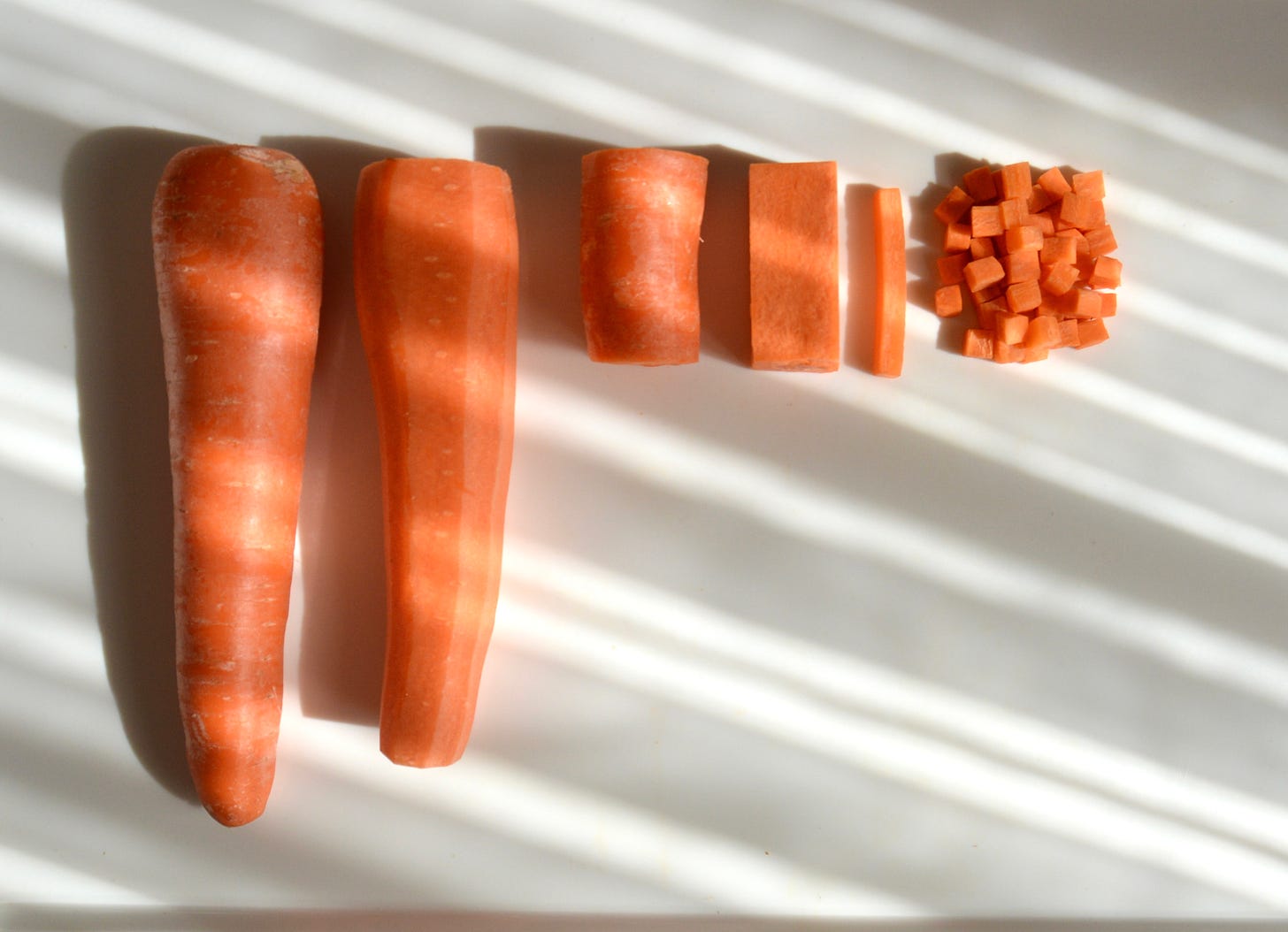
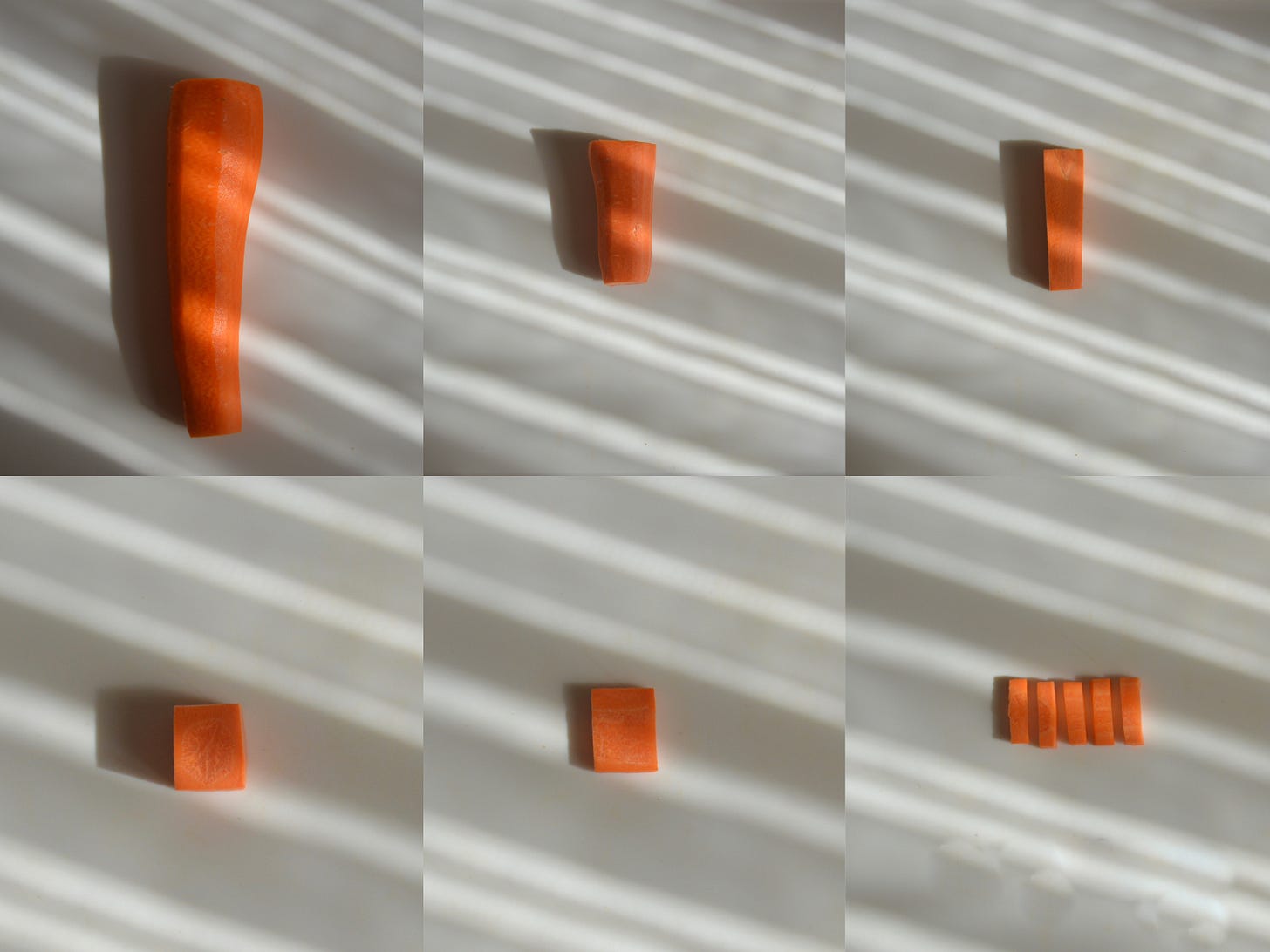
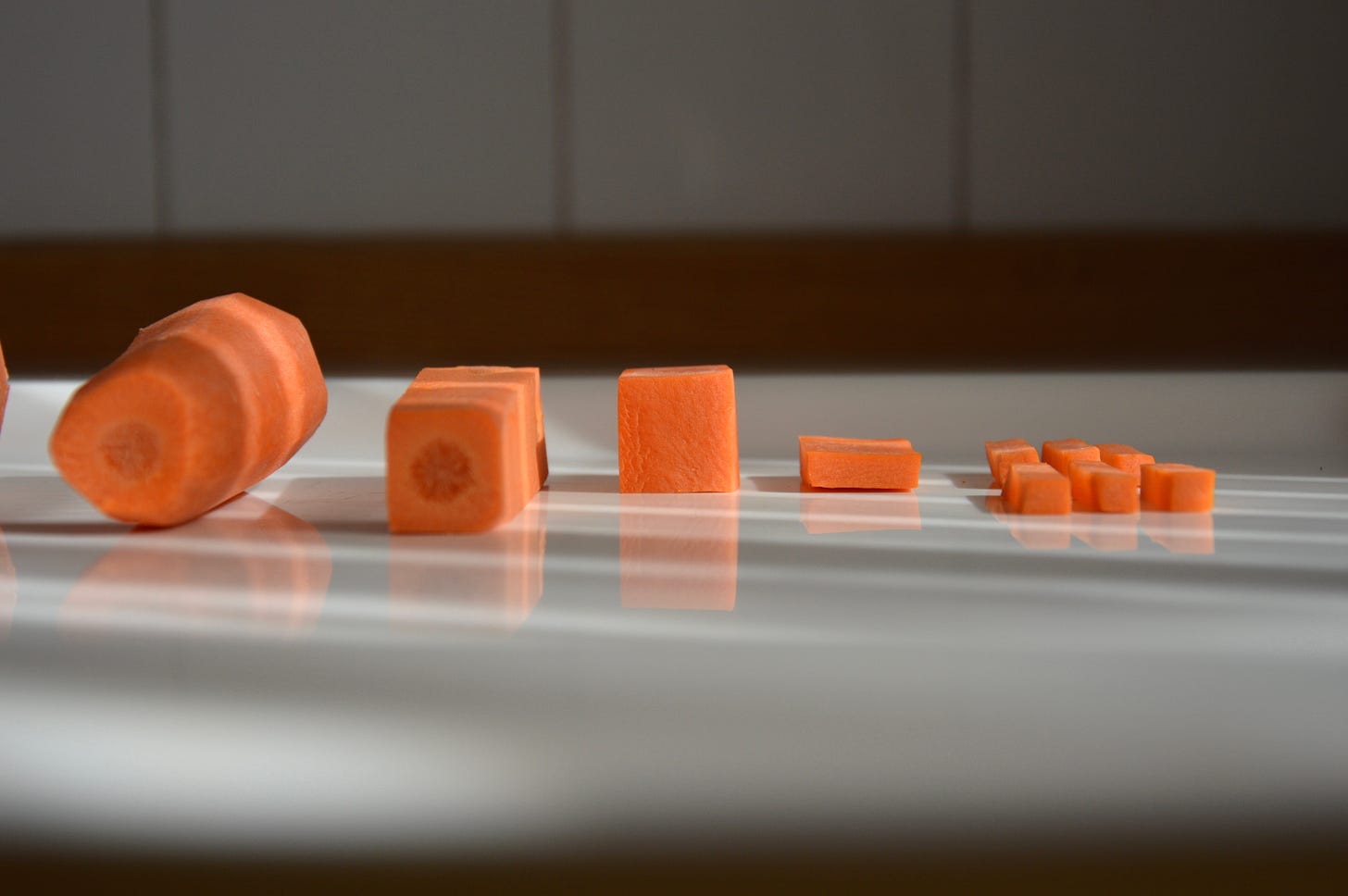
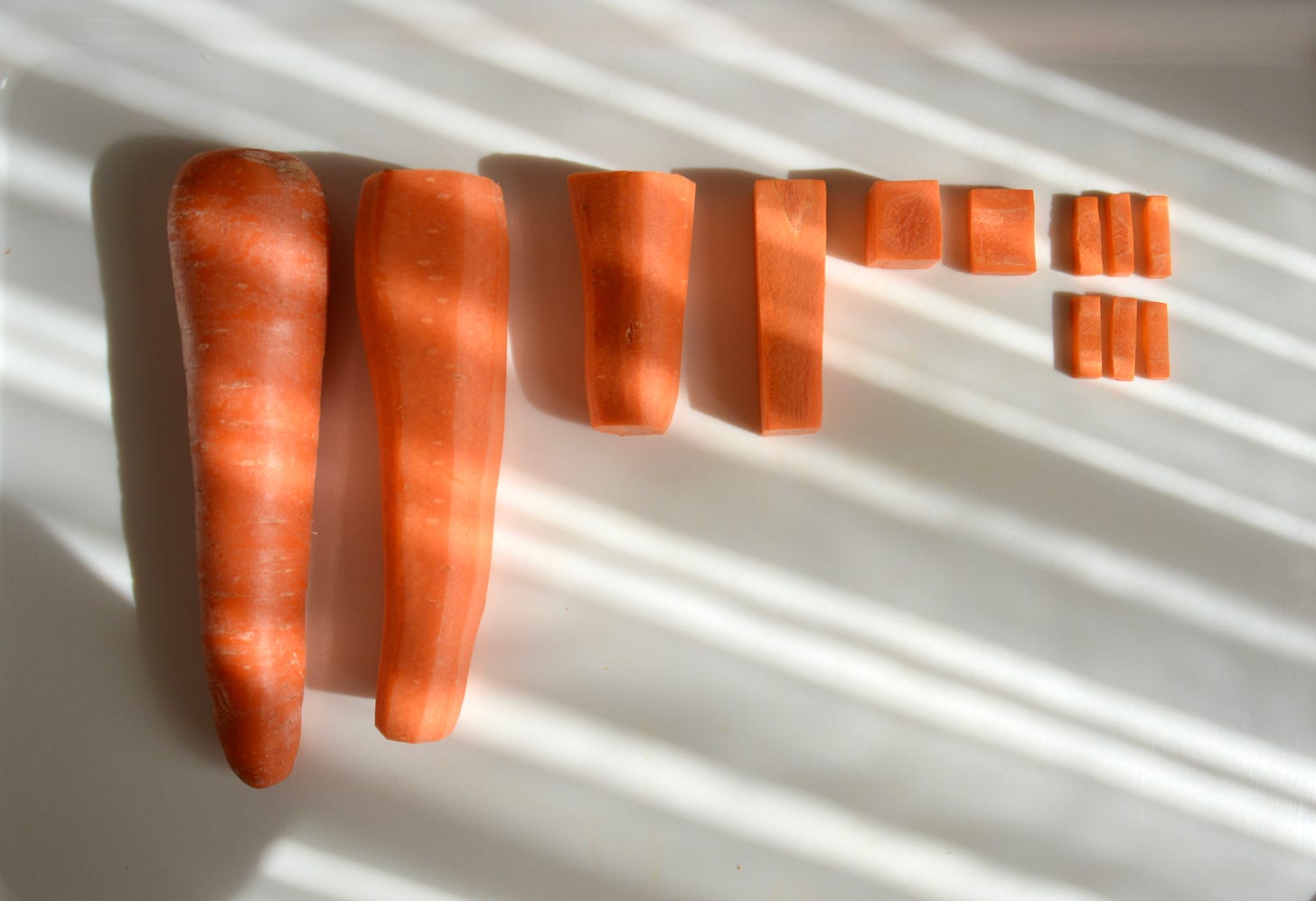
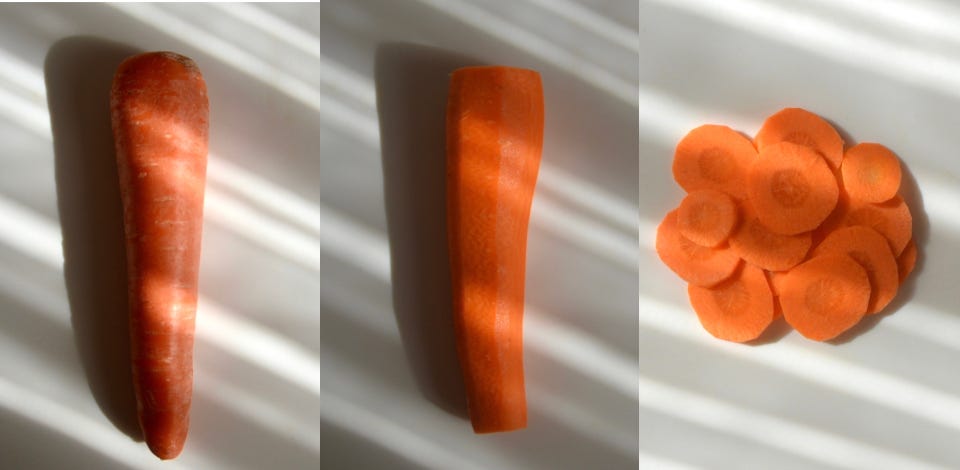
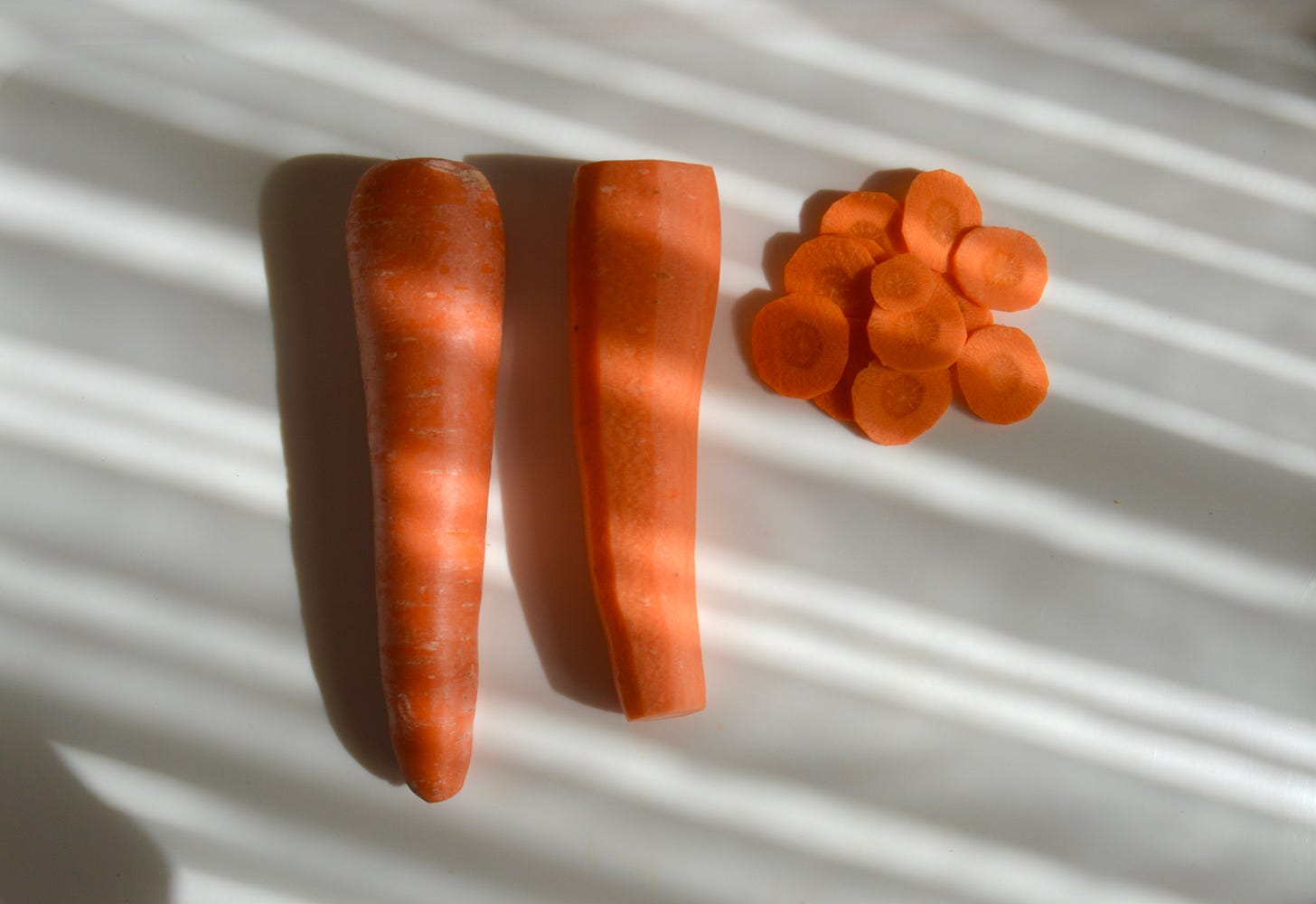
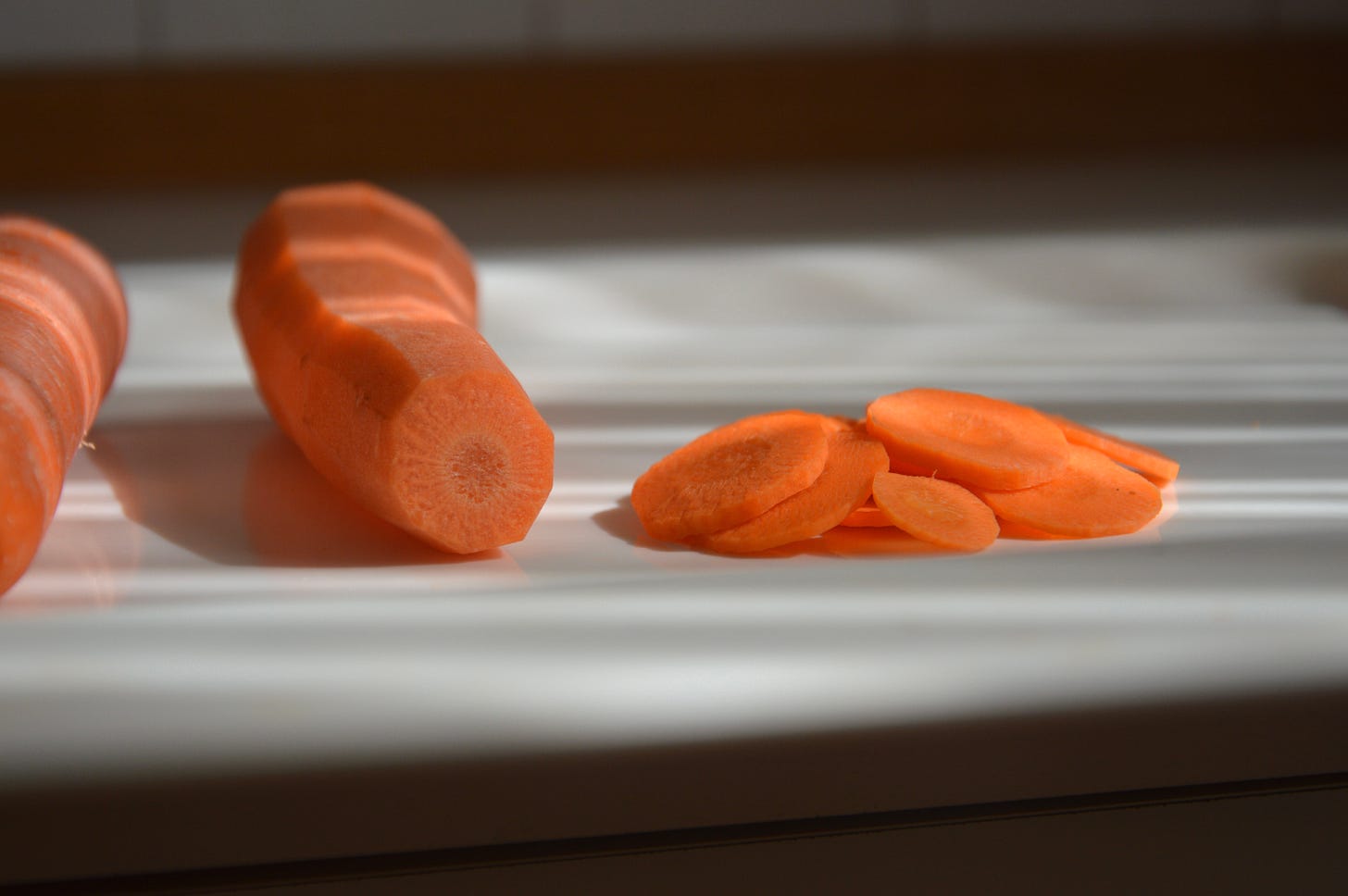
I’d love a guide on the fancy paysanne shapes you mentioned!
I think it is a typing error under The cuts of Carrot Julienne 4cm *2cm. I guess 2 cm was typing error. Thank you.